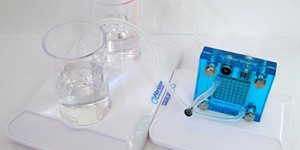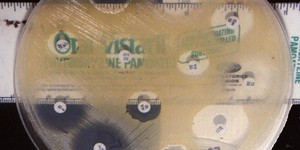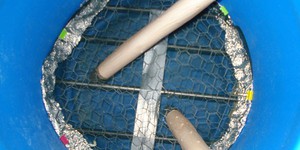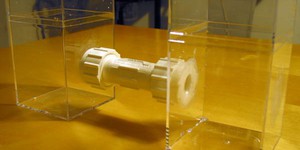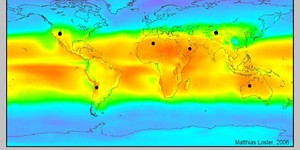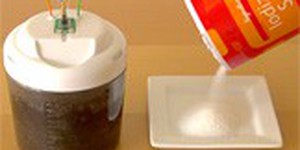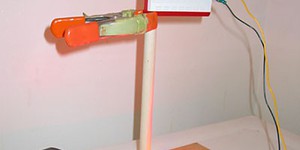Tenth Grade, Energy & Power Science Projects (11 results)
Whether you are working, studying, or being entertained, much of our daily routines rely on being plugged-in. You probably don't spend a lot of time thinking about where all that power comes from, but someone has to! Figuring out the best ways to produce energy is a big job that is growing along with the world's population. Energy production is a complex topic with debates about whether to invest in fossil fuels or clean renewable energies like solar, wind, water, and geothermal. Take a first-hand look at some of the problems and challenges scientists and engineers are tackling as they look at making and storing energy.
|
Select a resource
Sort by
|
You probably know that turning off the lights and the water, and not wasting paper are all ways to help the environment and conserve our resources. Did you know that another way is to use fuel cells? A fuel cell is a device that converts the energy in chemicals to electricity and it creates no pollution. The starting chemical does not have to be something complex — in fact you it can even be water! In this science fair project try your own hand at converting water to electricity with the…
Read more
Featured
Have you heard that garlic powder is supposed to inhibit the growth of bacteria? Which do you think would make a better disinfectant: a solution of garlic powder or a solution of bleach? This project shows you a straightforward way to compare the effectiveness of different disinfectants (or other antimicrobial agents), by measuring zones of inhibition on a culture plate.
Read more
Solar cells are popping up on rooftops everywhere these days and are a model for clean, renewable energy.
Did you ever look at those solar panels and wonder how we can get electricity produced by solar cells
when the sun is not shining? It is a great question because solar panels do not produce electricity when
it is dark outside. One strategy to overcome this challenge is to store the energy produced by solar
cells during the day in the form of a fuel that can be used at a later time. In…
Read more
New
Remembering to take medicine at the right time can be hard, especially if you need to take multiple medications at different times of day. It might not be a big deal if you forget to take your daily multivitamin, but for some people, forgetting to take medication at the right time can be dangerous. What if you had a device that could not only set off an alarm at the right time, but also automatically dispense the right pills for you? In this project, you will build an automatic medicine…
Read more
Earth, the Sun, wind, and water are all sources of renewable and sustainable energy—and sources you probably already know about. But did you know that you can get energy from such things as banana peels, coffee grounds, and newspaper? In a process called composting, you can transform kitchen and other solid wastes into a product that is beneficial for your garden: homemade fertilizer. As the waste decomposes, it also creates heat. Can this naturally created heat be put to use? In this…
Read more
"Gross! What is that in the toilet?" But maybe it's not just gross. Did you know there are bacteria that digest organic waste and create electrons? What if there was a way to collect those electrons to power a circuit? In this science fair project, you will make a microbial fuel cell to collect the electrons that the bacteria—anaerobic bacteria—create...only, you'll be using mud, which is much safer to handle than wastewater. If you would like to learn how to reuse and recycle an…
Read more
Do you like getting something for nothing? Everybody likes getting things for free. How about getting energy and power for free? The Sun sends us free energy every second and all we have to do is collect it. Taking advantage of free energy can reduce our dependence on fossil fuels, which are harmful to our environment. In this science fair project, you will work with a solar panel, which is a collector of free energy, and investigate how varying the angle of the solar panel, and thus the amount…
Read more
New
Artificial intelligence (AI) programs can now generate photorealistic pictures of people who do not exist in the real world. How can you tell if a picture is of a real person or a fake, AI-generated person? What features of the picture do people use to decide whether the face is real or AI-generated? In this project, you will explore these questions as you ask volunteers to look at both real and AI-generated pictures of human faces.
Read more
Most of the energy and fuel that we use in the United States is derived from burning fossil fuels. Fossil fuels are the remains of plants and animals that lived hundreds of millions of years ago. Examples of fossil fuels include coal, petroleum oil, and natural gas. Burning coal releases 21.3 gigatons of carbon dioxide— a greenhouse gas that may be responsible for global warming and climate change—into the air in one year. About half of this amount is absorbed by natural processes…
Read more
Generating power from mud sounds like science fiction, but it is actually real science, and a promising source of alternative energy. Topsoil is packed with bacteria that generate electricity when placed in a microbial fuel cell. Because such bacteria-laden soil is found almost everywhere on Earth, microbial fuel cells can make clean, renewable electricity nearly anyplace around the globe. They are an up-and-coming technology that scientists and engineers are working to make even more…
Read more
Global warming, climate change, melting ice caps—these are all big events that have an impact our environment. What can we do to help reduce the impact? We can reduce, reuse, and recycle. What can cities do to help? Cities can eliminate waste by saving energy. Cities around the world are switching from incandescent traffic signals to LED traffic signals to save energy and money. That's because LEDs are more efficient than incandescent lamps, which means that LEDs produce more light…
Read more
If you are interested in exploring how renewable energy can improve the environment, this project could be for you. You'll take on a real-life engineering challenge: deciding whether the benefits of a renewable energy technology are worth the cost to implement it. Some sample questions are suggested, but you can also come up with your own question that matches your specific renewable energy interest. Is there such thing as a free lunch?
Read more
The Falkirk Wheel is a rotating boat lift connecting the Forth and Clyde Canal with the Union Canal near Falkirk in central Scotland. It consists of two diametrically opposed caissons which rotate to lift boats between the two canals through a height of 35 meters. The wheel is always perfectly balanced and, despite its enormous mass, rotates through 180° in less than four minutes, using just 1.5 kilowatt-hours (Wikipedia contributors, 2006). Do background research…
Read more
|
Explore Our Science Videos
Volleyball Machine: 2019 Engineering Challenge
Colorful Melting Ice Ball Patterns - STEM Activity
Write and Read Braille – STEM activity


